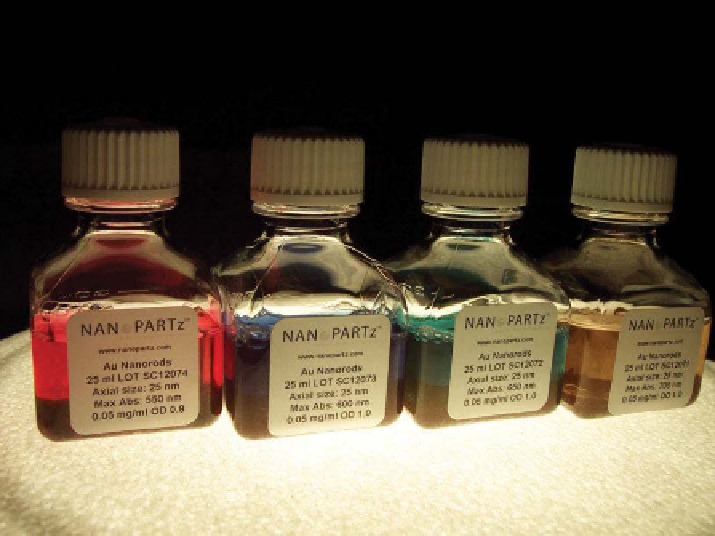Biomedical Engineering Reference
In-Depth Information
FiGure 12.4
Commercial samples of gold nanorods from Nanopartz, Inc. (
See insert for
color representation of the figure.).
.
seed-mediated synthesis in water in the presence of a cationic surfactant CTAB and
specific amounts of silver ions (~20 mol%). Under these conditions, the content
of rodlike particles is almost 100%, and no tedious purification from other shapes
is required.
This synthesis was introduced by Murphy
et al.
[35] and until now remains the
best available technique in spite of many other reports published since then.
however, even this method has a serious limitation because the yield of conversion
(gold ions to metal) is only 10-15%, and up to 90% of the precious starting
material (gold chloride) remains in solution after the growth of NRs stops com-
pletely. Unfortunately, attempts to improve the yield by increasing the amount of
reducing agent normally lead to uncontrolled nucleation and many irregular
shapes, which are very hard to separate. As a result, only milligram quantities can
be produced in one batch using the best available technique [43]. Interestingly,
AuNRs recently became commercially available, but their price is astronomically
high. They are sold by Sigma-Aldrich, Inc. (which is a distributor of Nanopartz
AuNRs), at $306/mg, which is more than 7200 times the current price of bulk
gold. The fact that many researchers from academe and industry are willing to buy
AuNRs at that price clearly indicates that there is an urgent need to develop new
knowledge in the synthesis of anisotropic gold structures and find an efficient way
to produce their large quantities.

Search WWH ::

Custom Search